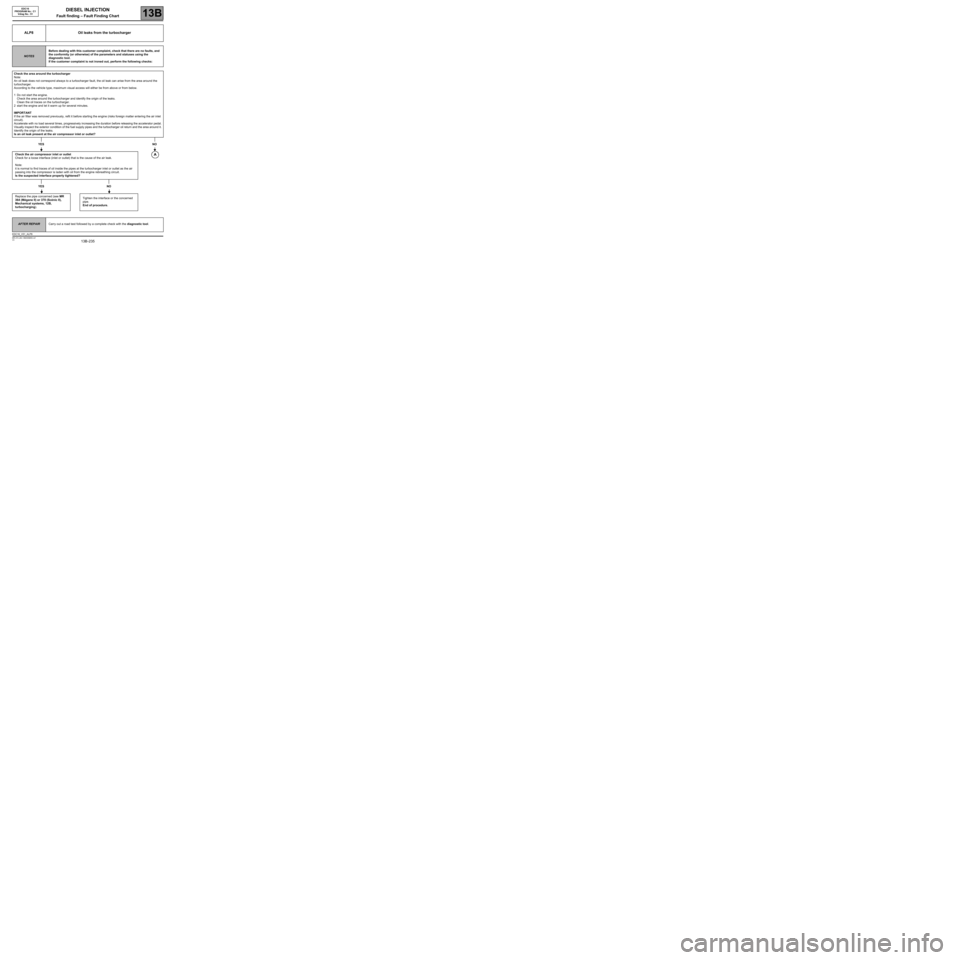DIESEL INJECTION
Fault finding – Fault Finding Chart13B
13B -235V3 MR-372-J84-13B250$855.mif
ALP8 Oil leaks from the turbocharger
NOTESBefore dealing with this customer complaint, check that there are no faults, and
the conformity (or otherwise) of the parameters and statuses using the
diagnostic tool.
If the customer complaint is not ironed out, perform the following checks:
Check the area around the turbocharger
Note:
An oil leak does not correspond always to a turbocharger fault, the oil leak can arise from the area around the
turbocharger.
According to the vehicle type, maximum visual access will either be from above or from below.
1Do not start the engine.
Check the area around the turbocharger and identify the origin of the leaks.
Clean the oil traces on the turbocharger.
2start the engine and let it warm up for several minutes.
IMPORTANT
If the air filter was removed previously, refit it before starting the engine (risks foreign matter entering the air inlet
circuit).
Accelerate with no load several times, progressively increasing the duration before releasing the accelerator pedal.
Visually inspect the exterior condition of the fuel supply pipes and the turbocharger oil return and the area around it.
Identify the origin of the leaks.
Is an oil leak present at the air compressor inlet or outlet?
YESNO
Check the air compressor inlet or outlet
Check for a loose interface (inlet or outlet) that is the cause of the air leak.
Note:
it is normal to find traces of oil inside the pipes at the turbocharger inlet or outlet as the air
passing into the compressor is laden with oil from the engine rebreathing circuit.
Is the suspected interface properly tightened?
YES NO
Replace the pipe concerned (see MR
364 (Mégane II) or 370 (Scénic II),
Mechanical systems, 12B,
turbocharging).Tighten the interface or the concerned
pipe.
End of procedure.
AFTER REPAIRCarry out a road test followed by a complete check with the diagnostic tool.
EDC16
PROGRAM No.: C1
Vdiag No.: 51
EDC16_V51_ALP8
